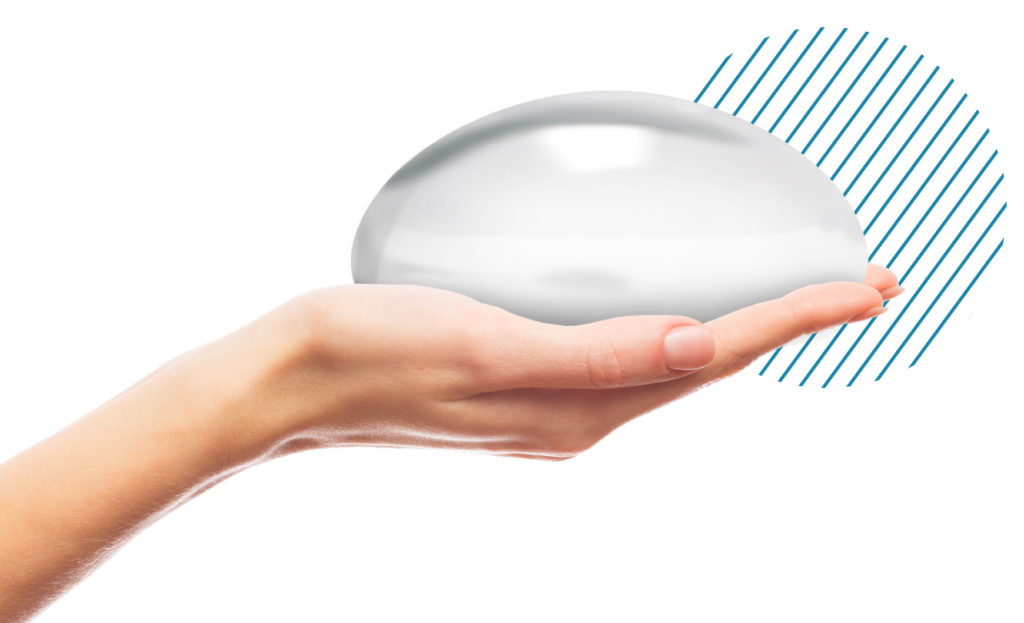It is important that the choice you make is the right choice for you, by having all the necessary information. To do this, and if you still have a question after browsing through the various sections of our site, we have gathered the most frequent questions for you, as well as our answers.
For any other questions, please do not hesitate to contact us.

Frequently asked Questions
Before surgery
› Your surgeon will help you to choose the size and shape of your breast implants after a physical examination. He will assess the width and shape of your chest, the height and axis of your breasts and the size of your areola. It is also important to talk to your surgeon about the outcome you want to achieve.
CE marking is mandatory for all medical devices circulating within the European Union. Since 1998, only products with a CE certificate of conformity and for which the manufacturer has provided complete and accurate information proving compliance with current standards and regulations are authorised. Outside the European Union, authorisation is granted by the competent authority.
› During puberty, breast size varies with hormonal changes and contraception. The breasts stabilise at the end of puberty. It is therefore recommended to wait until the end of puberty before having a breast implant procedure, and to comply with the minimum legal age in the country of the procedure, if applicable.
› You should check with the health service in your country.
› Silicone has been used in implants since 1950. It is considered the most widely tolerated biomaterial. It has many uses (medical and cosmetic in particular). Nevertheless, it is preferable to prevent the silicone from penetrating the tissues. The gel used for filling breast implants is very cohesive (it has a compact consistency) which minimises the risk of penetration into the body.
› This is a form that the surgeon will ask you to sign after your first consultations and before your procedure. This is not a release form but a document giving your consent for the procedure, and acknowledging that your practitioner has described the procedure to you and informed you about the risks.
› The legal time frame between the first consultation and the date of the procedure is 15 days. This lets you take the time to think about your decision, but also to have two consultations with the surgeon, have a mammogram (mandatory for women over the age of 35) and schedule an appointment with the anaesthetist for a full pre-operative assessment before the procedure. This reflection time is mandatory and is in your own interest.
After surgery
› The presence of breast implants does not prevent a mammogram from being performed. However, they do make the test more complicated and the results more difficult to interpret. It is therefore vital to tell the practitioner that you have breast implants to take the necessary precautions and adapt the technique (digital images) for the best results without damaging the implant.
› Like all women, those with implants must have regular check-ups to screen for breast cancer (general check-up and breast examination).
For women with implants, this check-up is scheduled each year with their surgeon or any other appropriate specialist to detect any problem related to the implants. Additional tests (mammogram, ultrasound or MRI scan) may be necessary.
› Yes, because the body sees any artificial implant as a foreign body, resulting in the formation of scar tissue around the implant and encapsulating it. This is a perfectly normal biological process that occurs after each breast implant procedure. However, in some cases, this capsule can thicken and harden, causing the implant to contract. Retractile capsular contracture generally causes pain and wrinkles on the surface of the breast.
› Rupturing of a breast implant is a rare complication that can occur after an impact, violent trauma or surgical trauma (implant damaged during the procedure). It may also be caused by a retractile fibrous shell or simply by the age of the implant. The greatest risk with a rupture is the migration of silicone gel into the body (leakage through a crack in the shell). Current breast implants use new generation medical-grade silicone. The silicone gel in the shell is very cohesive, reducing the risk of migration and complications. However, the breast implant must be removed if it ruptures.
› In general, it is recommended to refrain from any physical activities or sports for 6 weeks after the procedure to avoid any risk of the implant moving or any other complication.
For more intense sports that may cause impacts to the implant (running, weight training, combat sports, etc.), you should be cautious and be aware of the risks of early rupture in case of an impact.
› To date, there is no proof of a correlation between systemic complications, cancer or autoimmune diseases and silicone gel-filled breast implants.
› A decrease in nipple and areola sensitivity is normal whatever type of incision is used. This feeling is temporary, rarely permanent, and sensitivity returns after a few months.
› From a medical point of view, pregnancy is not contraindicated after a breast implant procedure. However, during this period, there are significant hormonal changes and the size of the mammary gland changes significantly, which can affect the aesthetic result.
It is therefore preferable to delay a breast implant procedure for 6 months to 1 year after giving birth (or at least 6 months after breastfeeding) for best results.
› Breastfeeding is not contraindicated after a breast implant procedure as the mammary glands and ducts are not affected. However, it is recommended to leave a gap between the procedure and a pregnancy (you should wait until 3 months after the procedure before becoming pregnant). Breast implants are not likely to be distorted by breastfeeding or a breast pump, but the aesthetic result can be affected by changes in the size of the mammary gland.
› The surgeon will give you the patient card after completing it and affixing the appropriate labels (each label corresponds to one implant). This card identifies the breast implants (implant reference, volume, serial number, manufacturer’s contact details, procedure date, doctor’s name, etc.).
You should keep the patient card given to you after the procedure with your medical documents for an unlimited time. In fact, we recommend that you carry it with you at all times to facilitate emergency medical care.
We also advise to photocopy and/or scan it in order to keep its traceability in case of lost or damage.
Any other questions
If you haven’t found the answer to your question, please don’t hesitate to contact us. It would be our pleasure to help you.

To know everything about our implants: composition, surfaces, lifespan … do not hesitate to visit the implants page.

To know everything about our implants: composition, surfaces, lifespan … do not hesitate to visit the implants page.
